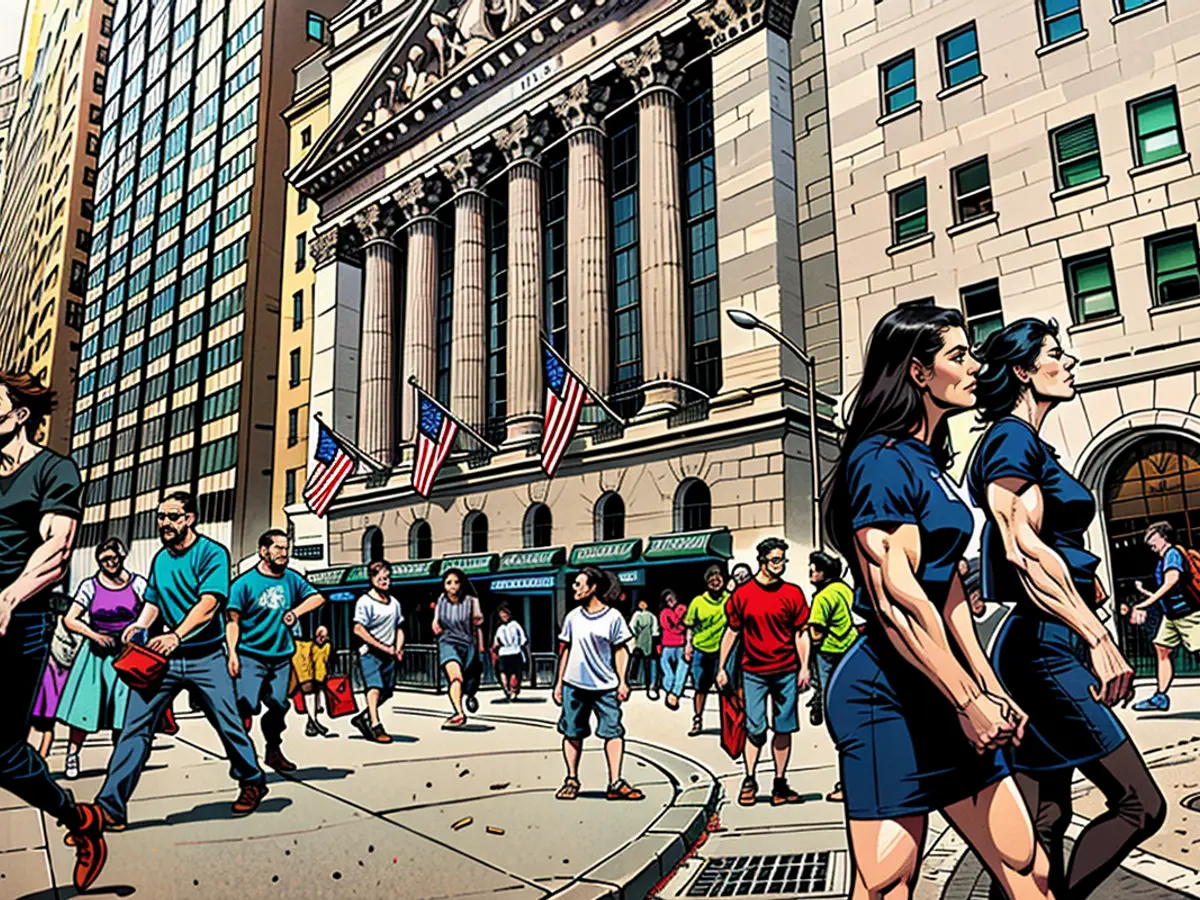Stocks are rallying again. Are they out of the woods?
Markets were rattled after the Bank of Japan raised interest rates in late July for the second time this year. That led the yen carry trade, in which investors borrow ultra-cheap yen to buy other higher-yielding assets, to begin unraveling. That unwinding came to a head last week, when Japanese stocks logged their worst day in decades. In the US, a dismal July jobs report sparked fears of a recession. US stocks and bond yields plunged.
But a slew of encouraging economic data this week has helped the market claw back some of the losses. The Dow is back above 40,000. All three major indexes are on pace for their best week this year.The blue-chip index has gained 2.7% so far this week, the Nasdaq Composite has gained 5.1% and the S&P 500 has added 3.7%. The benchmark index has now recovered all of last week’s brutal losses and is higher for the month.
Wall Street’s fear gauge, the Cboe Volatility Index (or VIX), fell to 15 after topping 65 last Monday, when the index also saw its biggest single-day point jump since March 2020.
“The bull market has not been derailed,” wrote Ned Davis Research’s Ed Clissold and Thanh Nguyen in a Thursday note. “While more aftershocks are possible, traders seem to be moving past the initial earthquake of the yen carry trade unwind.”
Despite more calm, investors are still on edge, sensitive to economic data as they look ahead to the Federal Reserve’s next meeting in September, says Geoffrey Strotman, senior vice president at Segal Marco Advisors. The Fed will parse the July Personal Consumption Expenditures price index, as well as labor and other inflation readings for August, before announcing its next policy decision on September 18.
Traders are betting on a September interest rate cut, but some central bank officials have indicated lately that they are in wait-and-see mode. Atlanta Fed President Raphael Bostic on Tuesday said that while inflation has cooled in recent months, he wants to see more progress on lowering prices.
“We need to make sure that the trend is real,” said Bostic at a conference hosted by the American College of Financial Services. “So, I’m willing to wait, but [a cut is] coming.”
Data this week has signaled that inflation is indeed cooling. Consumer prices rose 2.9% for the 12 months ended in July, edging below3% for the first time since March 2021, according to the Bureau of Labor Statistics. US wholesale price hikes also slowed.
The latest retail sales report offered more good news. Sales at US retailers rose 1% in July from the month before, up from June’s downwardly revised declineand far above economists’ expectations. That’s a sign that the US consumer, a key support of the US economy, remains resilient.
The spate of economic data has helped clear the path for that September rate cut, but it’s unclear whether the Fed will ease rates by a quarter- or half-point. Traders have trimmed their expectations for a half-point cut in September to 30% from 51% a week before, according to the CME FedWatch Tool.
The Russell 2000 index, which tracks the performance of US small-cap stocks, has jumped 2.5% this week as traders wager that the Fed will bring down rates in September. Small-caps tend to perform well following the first cut of a Fed’s easing cycle.
But before the central bank’s meeting, Fed Chair Jerome Powell is slated to give a speech at an economic summit next week in Jackson Hole, Wyoming. Powell has used the summit in the pastto hint at the Fed’s next policy move.
That has sometimes led to drastic swings inmarkets. After last year’s speech, stocks seesawed before ultimately ending the session moderately higher. In 2022, they plunged, with the Dow diving more than 1000 points after Powell warned of more pain to come from higher rates.
Elsewhere, crude prices have fallen this week after the Organization of the Petroleum Exporting Countriescut its global oil demand growth forecast for both 2024 and 2025. The group now expects demand to climb by 2.11 million barrels per day in 2024, lower than the 2.25 million it projected last month, citing softening expectations in China.
In corporate news, Starbucks shares have soared 26.4% this week after the company said Tuesday that CEO Laxman Narasimhan is stepping down immediately, set to be replaced next month by Chipotle’s Brian Niccol. Niccol helped turn the burrito chain around after its 2018 E. coli outbreak crisis hospitalized 22 people.
Walmart shares have popped 7.7% this week after it reported US sales at stores open for at least one year jumped last quarter and its operating income surged. Shares of Home Depot have slid 2.2% after the company lowered sales expectations in quarterly results on Tuesday. The company alsowarned that consumers are reeling in their spending on home improvement projects.
This story is developing and will be updated.
Businesses are observing the potential impact of the Federal Reserve's next meeting in September, as they look forward to the announcement of their next policy decision on September 18. In response to encouraging economic data, investors are now investing in the US stock market, with indexes like the Dow, Nasdaq Composite, and S&P 500 showing significant gains.
Despite the positive market trends, some investors are still cautious, keeping a close eye on indicators such as inflation rates and consumer spending. They are hoping for a September interest rate cut to further stimulate the economy and ensure continued business growth.








